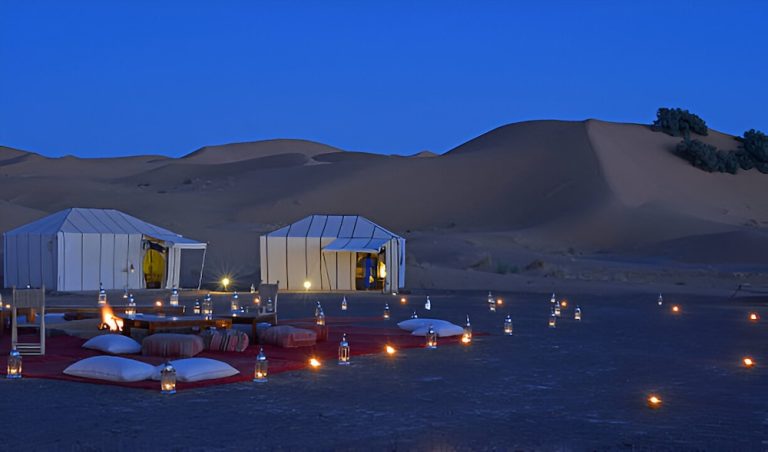Whatsapp: 00 212 666 777 338 |
Some places feel like living history, and Chouara Tannery (also spelled Chouwara/Chaouara) is one of them. From the balconies above the vats, you’ll watch artisans working leather as they have for centuries—paddling hides through milky lime baths, then into bowls of vibrant natural dyes that glow under the Fes sun. The scene is colorful, raw, and unforgettable—an essential stop on any Fes itinerary with Morocco On Tour.
Why Go to Chouara Tannery Fes
- Photogenic views: A mosaic of dye vats—saffron yellows, indigo blues, poppy reds—framed by honey‑colored medina walls.
- Craft tradition: One of the world’s oldest operating tanneries (dating back roughly a millennium).
- Culture up close: See every step of leather making, from raw hide to finished slippers, bags, and poufs.

A Short History
Chouara is the largest of Fes’s three historic tanneries in Fes el‑Bali. Its origins go back to the medieval period, when Fes leather earned a reputation across the Mediterranean. Recent restorations in the 2010s stabilized the pits and surrounding buildings, improving drainage and terrace safety while preserving traditional methods.
How the Tannery Works (What You’ll See)
- Soaking & dehairing: Hides are soaked in vats containing water and quicklime to loosen hair and fat.
- Softening: Artisans knead the hides in solutions rich in natural ammonia (traditionally from pigeon droppings) to make the leather supple.
- Rinsing: Hides are thoroughly washed before dyeing.
- Dyeing: Natural pigments are common—saffron or pomegranate for yellows, poppy/madder for reds, henna for orange‑brown, indigo for blues—though some modern dyes may also be used.
- Drying & finishing: Skins dry on rooftops before being cut, stitched, and crafted into shoes, bags, belts, and more.
Note: The smell is part of the experience—shops often offer mint sprigs to hold under your nose.

How to Visit (Viewpoints, Timing, Etiquette)
- Where: Fes el‑Bali (old medina), Souk el‑Chouara area. Easiest approach from Place R’cif or Place Seffarine; follow “Tanneries / Cuir” signs.
- How to access the view: Enter through a leather shop; a staff member will guide you up to their terrace. There’s no official entry fee, but a small tip (10–20 MAD per person) is customary if you don’t buy.
- Best time of day: Late morning to early afternoon (roughly 10:30–15:00) for bright colors and plenty of activity. In summer, go earlier to avoid heat.
- Opening hours: Most shops open daily, roughly 09:00–18:00, with a slower pace on Friday midday. Hours vary by shop.
- What to wear: Modest clothing and closed‑toe shoes (floors can be wet/slippery).
- Accessibility: Terraces require climbing narrow stairs; wheelchair access is limited.
- Guides & touts: Use licensed guides (official badge) or head straight into a reputable leather shop. If someone “leads” you unasked, you can politely decline.
Photography Tips
- Angle: Higher terraces give the best overview of the vats; look for symmetry and patterns.
- Light: Midday light makes colors pop; morning or late afternoon adds warmer tones.
- Lenses: A standard zoom (24–70mm) frames the scene; a short telephoto captures artisan details from a respectful distance.
- Etiquette: Ask before close‑ups of people; tip if someone poses or assists.
- Drones: Restricted in Morocco without prior authorization—leave them at home.
Shopping Smart: Leather Quality Checklist
- Look & feel: Even coloration, supple touch, consistent stitching, quality zippers/liners.
- Smell: Natural leather scent is normal; strong chemical odors can indicate heavy modern treatments.
- Price & haggling: Bargaining is expected. Compare items and ask about dye/process. Many shops can ship internationally—confirm costs and delivery times in writing.
Getting There
- From Bab Bou Jeloud (Blue Gate): ~25–35 minutes on foot through the medina (scenic but busy).
- From Place R’cif: ~10–15 minutes on foot (closest gate with nearby parking).
- Taxis: Can’t enter the medina; ask to be dropped at R’cif or Ain Azliten parking, then walk with a licensed guide.

Pair It with a Half‑Day Fes Medina Walk
- Place Seffarine: Coppersmiths at work—great soundscape.
- Al‑Attarine Madrasa: Stunning tile and cedar carving (small entry fee).
- Nejjarine Museum: Beautiful woodcraft museum with a rooftop view.
- Al‑Quaraouiyine: One of the world’s oldest universities (non‑Muslims may view from gates/courtyards only).
FAQs : Chouara Tannery in Fes
Travel to Fes with Morocco On Tour
- Licensed local guides: Navigate the medina with ease, skip hassles, and get the best terraces.
- Behind‑the‑scenes context: Understand each step of tanning and the stories of the artisans.
- Ethical stops: Shops we trust for fair pricing and quality craftsmanship.
- Custom routes: Pair Chouara with artisan workshops, panoramic rooftops, and tasty food stops.
Ready to Explore Fes?
Share your dates, group size, and interests. We’ll design a medina walk that blends the Chouara Tannery with Fes’s finest madrassas, markets, and hidden terraces—complete with pickups, licensed guides, and plenty of photo time.




